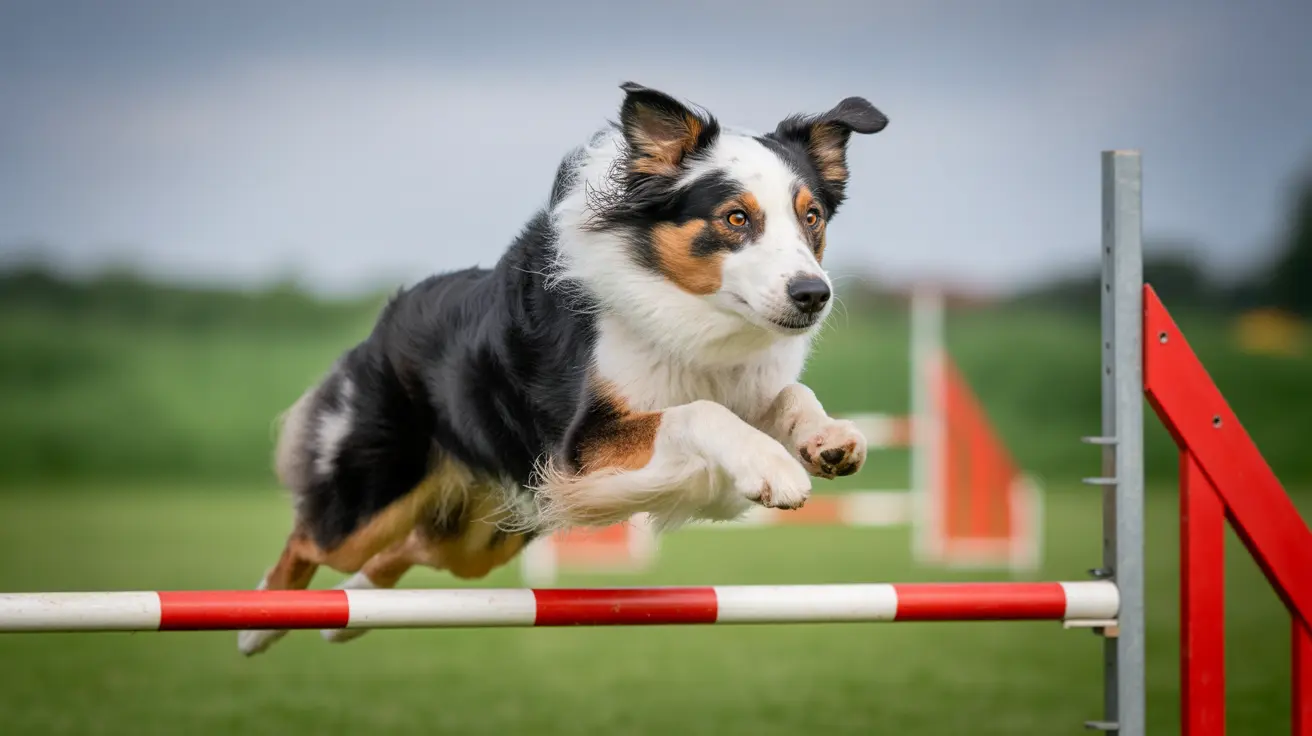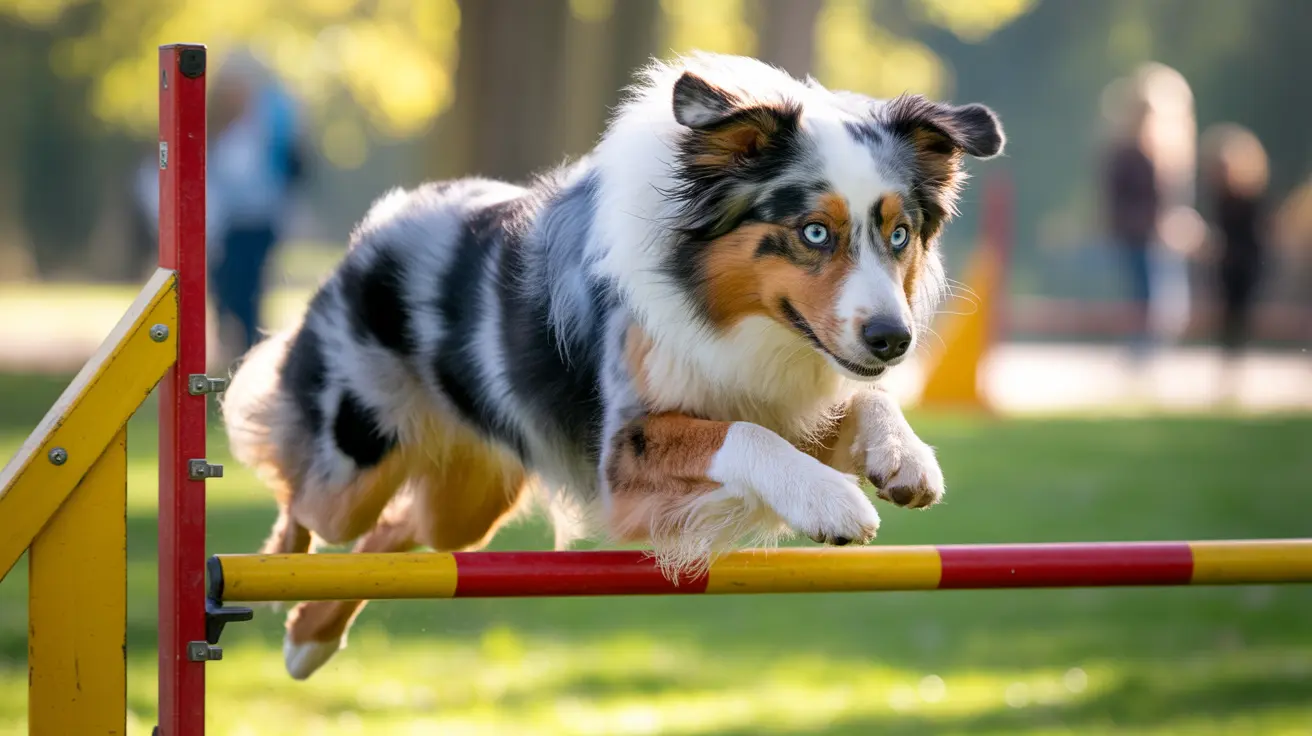Dog Sports Activities for Dogs and Owners: A Complete Guide to Active Canine Fun
Dog sports activities for dogs and owners have revolutionized the way we think about exercising and bonding with our canine companions. These competitive activities provide much more than simple physical exercise—they create opportunities for mental stimulation, socialization, and deep bonding between dogs and their handlers. Whether you're looking for casual weekend fun or serious competitive engagement, dog sports offer inclusive activities for many breeds and fitness levels, emphasizing teamwork, obedience, and communication.
From navigating agility courses to herding livestock, these structured activities tap into dogs' natural instincts while building discipline and coordination. The beauty of dog sports lies in their versatility—there's truly something for every dog-owner team, regardless of your pet's breed, age, or physical capabilities. Before diving into any sport, it's critical to have a veterinary evaluation to ensure your dog's health and readiness for physical activity.
Most Popular Dog Sports for Every Team
Agility: The Ultimate Obstacle Challenge
Agility stands out as one of the most beloved dog sports, where dogs navigate obstacle courses including jumps, tunnels, and weave poles as quickly and accurately as possible, guided entirely by their handlers' voice and gestures. This dynamic sport develops coordination, endurance, and strong dog-handler teamwork while accommodating dogs of various breeds and physical abilities by adjusting course difficulty.
The beauty of agility lies in its accessibility—you can start with basic jumps and tunnels before progressing to more complex obstacles. Dogs learn to trust their handlers completely, as they must follow verbal and visual cues without physical guidance through the course.
High-Energy Sports: Flyball and Dock Jumping
Flyball brings out the competitive spirit in dogs through relay racing. Teams of four dogs race over hurdles to a spring-loaded box that releases a tennis ball when stepped on. Dogs must retrieve the ball and return over the hurdles, promoting cardiovascular fitness, discipline, and social interaction among team members.
For water-loving breeds, dock jumping (dock diving) offers an exciting alternative. Dogs leap from a dock into water, competing for distance or height. This low-impact sport builds water confidence while providing joint-friendly exercise, making it particularly suitable for breeds prone to joint issues.
Endurance and Teamwork: Canicross and Disc Dog
Canicross represents the ultimate in human-canine cooperation. This cross-country running activity involves a dog harnessed and attached to a person by a bungee line, pulling the runner along trails. This demanding sport strengthens both dog and handler endurance while reinforcing cooperation and trust.
Disc dog (Frisbee) competitions showcase dogs catching flying discs in timed events, distance catching, or freestyle performances. This activity enhances physical capacity, agility, coordination, and interactive playfulness, making it perfect for high-energy dogs who love to jump and chase.
Specialized Dog Sports for Unique Skills
Working Dog Disciplines
Herding trials allow dogs to demonstrate their ability to manage livestock such as sheep or cattle. These trials fulfill natural herding instincts, provide comprehensive mental and physical exercise, and require precise obedience and control. Even dogs without herding backgrounds can often learn these skills, though herding breeds typically excel.
Scent work (nose work) taps into dogs' incredible olfactory abilities, with dogs locating target odors hidden in various environments. This sport stimulates natural scenting talents while boosting confidence, proving especially beneficial for shy or older dogs who might struggle with more physically demanding activities.
Precision and Control Sports
Obedience trials represent competitive events assessing dogs' abilities to follow commands with precision and enthusiasm across various environments. These trials improve discipline, confidence, and communication between dog and handler, forming the foundation for many other sports.
Rally obedience offers a more dynamic alternative, where teams navigate courses with numbered signs directing specific commands. Less rigid than traditional obedience, rally emphasizes teamwork and responsiveness, making it more accessible for beginners.
Treibball, often called "soccer for dogs," involves herding large exercise balls into a goal using nose or body contact. This innovative sport fosters problem-solving skills, obedience, and herding instincts without requiring livestock.
Choosing the Right Dog Sport for Your Team
Assessing Your Dog's Suitability
Selecting appropriate dog sports activities requires careful consideration of multiple factors. Your dog's breed characteristics play a significant role—herding breeds naturally gravitate toward herding trials and treibball, while water breeds excel at dock diving. However, don't let breed stereotypes limit your exploration, as many dogs surprise their owners with hidden talents.
Age and physical health are crucial considerations. Puppies should avoid high-impact sports until their growth plates close, while senior dogs might prefer scent work or gentle obedience training over demanding agility courses. Your dog's temperament also matters—high-energy dogs thrive in flyball and canicross, while more methodical dogs might prefer tracking or nose work.
Practical Considerations for Owners
Your lifestyle, available time, and access to training facilities significantly impact sport selection. Some activities like disc dog require minimal equipment and space, while others like agility need specialized obstacles and training areas. Consider joining local dog sport clubs or attending trial events to observe different sports and connect with experienced handlers.
Financial considerations include equipment costs, training fees, travel expenses for competitions, and ongoing veterinary care. Start with sports requiring minimal initial investment to gauge your and your dog's interest before committing to expensive equipment.
Health Benefits and Safety Considerations
Physical and Mental Health Advantages
Dog sports activities provide comprehensive health benefits extending beyond basic exercise. Regular participation improves cardiovascular fitness, muscle strength, flexibility, and coordination. Mental stimulation from learning new skills and solving problems helps prevent boredom-related behavioral issues while building confidence and reducing anxiety.
The social aspects benefit both dogs and owners, providing opportunities to meet like-minded individuals while exposing dogs to various environments, people, and other dogs in controlled settings. This socialization is particularly valuable for young dogs or those with social anxiety.
Safety Protocols and Injury Prevention
Proper preparation prevents injuries and ensures positive experiences. Gradual training and progression help avoid physical strain and mental burnout. Every training session should include proper warm-up and cool-down routines to maintain muscle health and flexibility.
Adequate nutrition becomes crucial for sporting dogs. Joint supplementation, especially with products containing undenatured type II collagen (UC-II®) and omega-3 fatty acids, supports canine athletes by reducing joint pain and enhancing mobility. Consult your veterinarian about nutritional needs specific to your dog's sport and intensity level.
Training Fundamentals and Success Strategies
Building Strong Foundations
Successful participation in dog sports requires patience, consistency, and positive reinforcement techniques. Start with basic obedience and gradually introduce sport-specific skills. Many sports build upon fundamental commands like sit, stay, come, and heel, making basic training invaluable regardless of your chosen activity.
Positive reinforcement, consistency, and patience optimize training success. Use high-value treats, praise, and play as rewards, keeping training sessions short and enjoyable. End on positive notes to maintain enthusiasm and prevent frustration for both dog and handler.
Progressive Skill Development
Begin with simple exercises and gradually increase complexity as your dog masters each level. For agility, start with low jumps and straight tunnels before introducing weave poles or contact obstacles. In flyball, practice ball retrieval before adding hurdles and team dynamics.
Regular practice sessions combined with patience yield the best results. Some dogs learn quickly while others need more time—respect your dog's learning pace and celebrate small victories along the way.
Frequently Asked Questions
What age can dogs start participating in sports?
Dogs can begin basic training and low-impact sports like scent work as early as 8-12 weeks old. However, high-impact activities like agility jumping should wait until growth plates close, typically around 12-18 months depending on breed size. Always consult your veterinarian before starting any sport program.
How much does it cost to get started in dog sports?
Initial costs vary significantly by sport. Basic activities like disc dog or canicross require minimal equipment ($50-$200), while agility can involve substantial equipment investments ($500-$2000+). Many beginners start by attending classes or joining clubs that provide equipment and instruction.
Can older dogs participate in dog sports?
Absolutely! Many sports accommodate senior dogs with modifications. Scent work, rally obedience, and gentle agility with lowered jumps work well for older dogs. These activities provide mental stimulation and gentle exercise while respecting physical limitations. Always have veterinary clearance before beginning any program.
What if my dog isn't interested in the first sport we try?
Dog preferences vary widely, so don't be discouraged if the first sport doesn't click. Try different activities to find what excites your dog most. Some dogs prefer mental challenges like scent work, while others thrive on physical activities like flyball. The key is finding the right match for your dog's personality and abilities.
How often should we train for dog sports?
Training frequency depends on the sport and your goals. Generally, 2-3 short sessions (15-20 minutes) per week work well for beginners, with longer sessions as skills develop. Consistency is more important than duration—regular short sessions yield better results than infrequent marathon training.
Do I need special insurance for dog sports activities?
Check with your current pet insurance provider about coverage for sports-related activities and injuries. Some policies exclude certain sports or require additional coverage. Many dog sport organizations also offer liability insurance for members participating in sanctioned events.
Can mixed breed dogs compete in dog sports?
Yes! Most dog sports welcome mixed breeds and often have specific classes or divisions for them. Mixed breeds frequently excel in various sports, sometimes outperforming purebreds. Focus on your individual dog's abilities and interests rather than breed expectations.
Conclusion
Dog sports activities for dogs and owners offer incredible opportunities to strengthen bonds while providing essential physical exercise and mental stimulation. Whether you choose the precision of obedience trials, the excitement of flyball, or the challenge of agility, these activities enrich both canine and human lives in measurable ways. The key to success lies in choosing activities that match your dog's personality, physical capabilities, and your lifestyle while maintaining focus on safety and positive training methods.
Remember that the journey matters more than the destination in dog sports. While competitive success brings satisfaction, the real rewards come from the deepened relationship with your dog, improved communication, and shared adventures. Start slowly, be patient with the learning process, and most importantly, have fun discovering what activities bring out the best in your canine companion.





